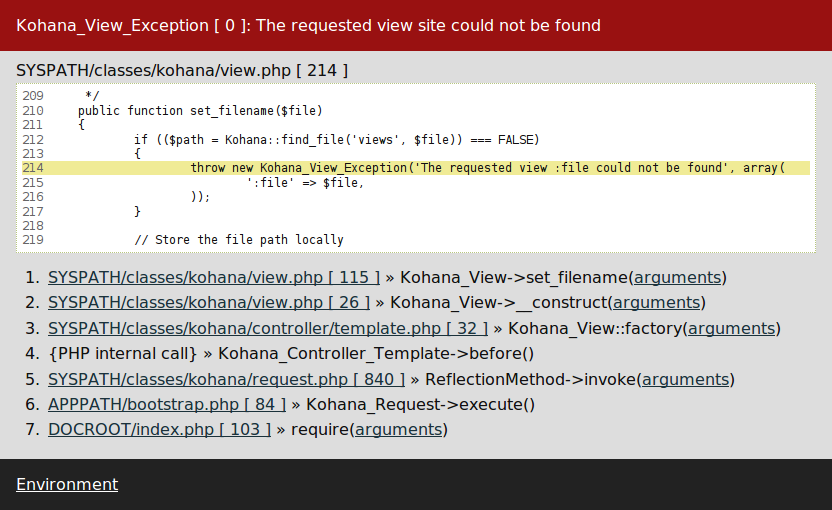Just about every framework ever written has some kind of hello world example included, so it'd be pretty rude of us to break this tradition!
We'll start out by creating a very very basic hello world, and then we'll expand it to follow MVC principles.
First off we have to make a controller that Kohana can use to handle a request.
Create the file application/classes/Controller/Hello.php in your application folder and fill it out like so:
<?php
Class Controller_Hello extends Controller
{
public function action_index()
{
echo 'hello, world!';
}
}
Lets see what's going on here:
<?phpClass Controller_Hello extends ControllerController_ and an underscore delimited path to the folder the controller is in (see Conventions and styles for more info). Each controller should also extend the base Controller class which provides a standard structure for controllers.public function action_index()echo 'hello, world!';Now if you open your browser and go to http://localhost/index.php/hello you should see something like:

What we did in the previous section was a good example of how easy it to create an extremely basic Kohana app. (In fact it's so basic, that you should never make it again!)
If you've ever heard anything about MVC you'll probably have realised that echoing content out in a controller is strictly against the principles of MVC.
The proper way to code with an MVC framework is to use views to handle the presentation of your application, and allow the controller to do what it does best – control the flow of the request!
Lets change our original controller slightly:
<?php
Class Controller_Hello extends Controller_Template
{
public $template = 'site';
public function action_index()
{
$this->template->message = 'hello, world!';
}
}
extends Controller_Templatepublic $template = 'site';$this->template->message = 'hello, world!';$this->template is a reference to the view object for our site template. What we're doing here is assigning a variable called "message", with a value of "hello, world!" to the view.Now lets try running our code...

For some reason Kohana's thrown a wobbly and isn't showing our amazing message.
If we look at the error message we can see that the View library wasn't able to find our site template, probably because we haven't made it yet – doh!
Let's go and make the view file application/views/site.php for our message:
<html>
<head>
<title>We've got a message for you!</title>
<style type="text/css">
body {font-family: Georgia;}
h1 {font-style: italic;}
</style>
</head>
<body>
<h1><?php echo $message; ?></h1>
<p>We just wanted to say it! :)</p>
</body>
</html>
If we refresh the page then we can see the fruits of our labour:

In this tutorial you've learnt how to create a controller and use a view to separate your logic from your display.
This is obviously a very basic introduction to working with Kohana and doesn't even scrape the potential you have when developing applications with it.